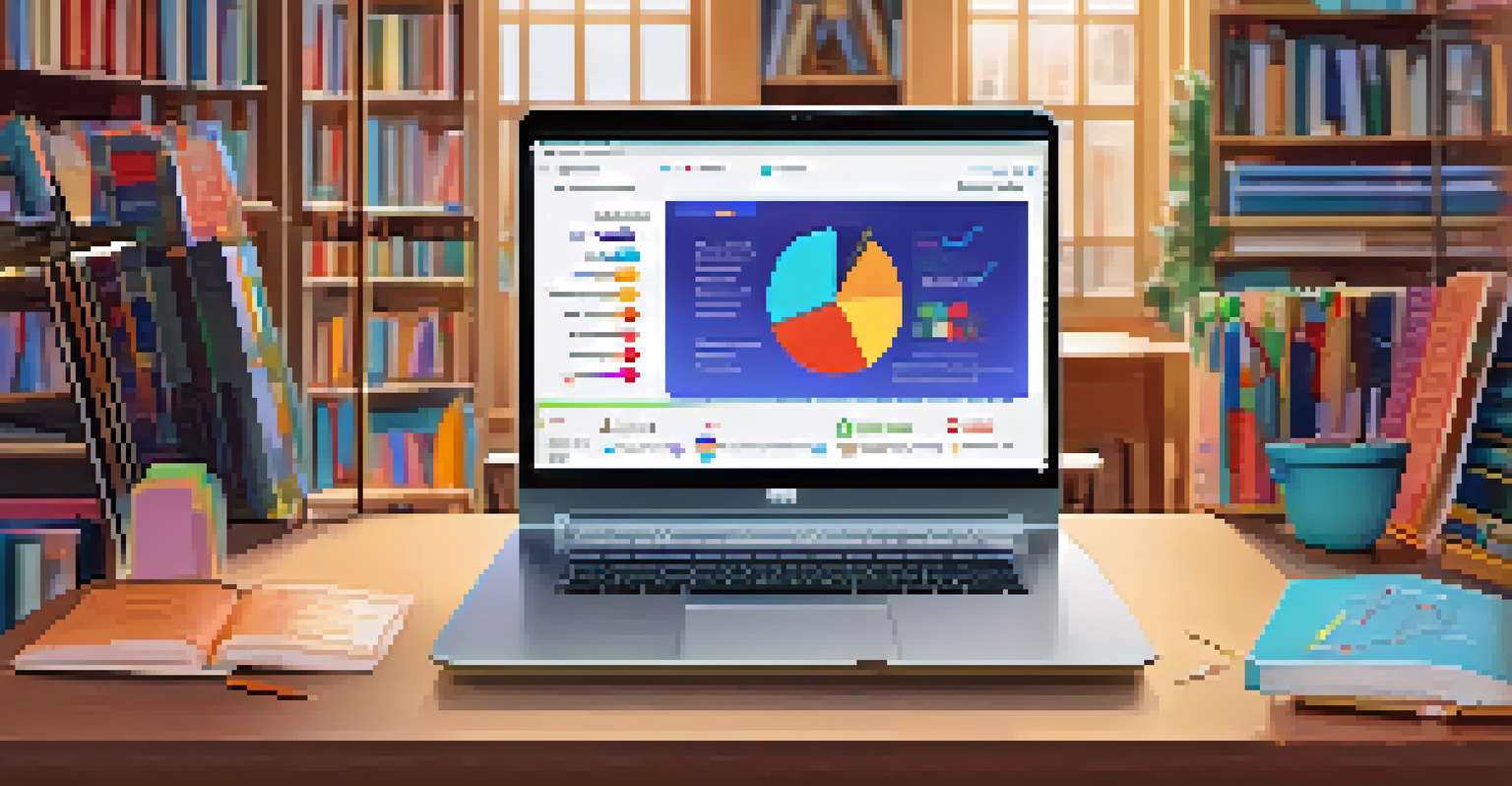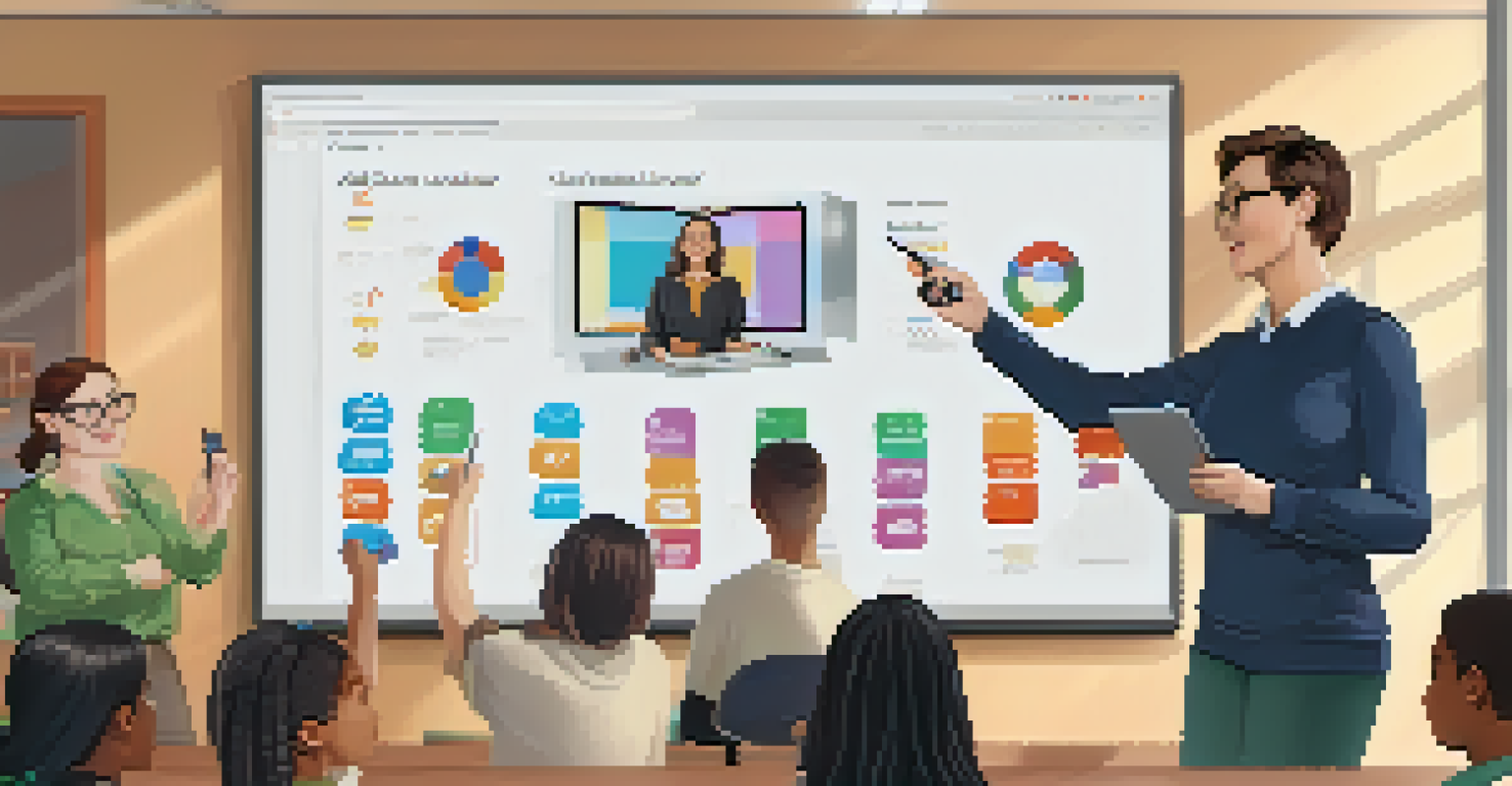The Role of Artificial Intelligence in Blended Learning Models

Understanding Blended Learning and Its Benefits
Blended learning combines traditional classroom methods with online experiences, creating a flexible learning environment. This model allows students to learn at their own pace while still benefiting from face-to-face interactions with educators. As educational institutions adopt this approach, they can cater to diverse learning styles and needs, fostering a more inclusive atmosphere.
Blended learning is not a new concept, but it is a powerful one that combines the best of both worlds: online learning and traditional classroom experiences.
The benefits of blended learning are numerous. For one, it often leads to improved student engagement since learners can choose when and how they interact with course materials. Additionally, blended learning can help educators allocate their time more effectively, focusing on personalized support while technology handles routine tasks.
By merging the best of both worlds—online and in-person education—blended learning prepares students for the demands of modern workplaces. Furthermore, it encourages self-directed learning, equipping students with essential skills such as time management and critical thinking.
The Rise of Artificial Intelligence in Education
Artificial Intelligence (AI) has made significant strides in various fields, and education is no exception. AI refers to the simulation of human intelligence processes by machines, especially computer systems. In the context of education, AI can analyze vast amounts of data to provide insights into student learning patterns and preferences.

With AI's ability to process information quickly, educators can leverage this technology to enhance their teaching methods. For instance, AI-driven tools can identify students who may be struggling, enabling timely interventions. This proactive approach ensures that no student is left behind, fostering a more supportive learning environment.
Blended Learning Enhances Flexibility
By combining online and traditional methods, blended learning creates a flexible environment that caters to diverse student needs.
Moreover, AI can personalize learning experiences for each student. By tailoring content to individual needs, AI helps create a more effective and engaging learning journey, ultimately improving academic outcomes.
How AI Enhances Personalization in Blended Learning
Personalization is at the heart of effective blended learning. AI technologies can assess student performance in real-time, adapting lesson plans and resources to meet each learner's unique needs. This adaptability is crucial, especially in a diverse classroom where students come from various backgrounds and learning abilities.
Artificial Intelligence is transforming the way we learn, making education more personalized and accessible than ever before.
For example, an AI system can analyze a student's quiz results and suggest specific resources, such as videos or articles, to help reinforce concepts they find challenging. This tailored approach not only boosts understanding but also motivates students to take charge of their learning.
Ultimately, the ability to personalize education enhances student engagement and retention. When learners feel that their individual needs are being met, they are more likely to stay committed to their studies and achieve better outcomes.
AI-Powered Tools Transforming Student Assessment
Assessing student performance is a critical component of blended learning. AI-powered tools can streamline this process, making it easier for educators to gauge student understanding and provide timely feedback. Instead of relying solely on traditional tests, AI can analyze a range of data points to offer a more comprehensive view of a student's progress.
For instance, AI can evaluate participation in online discussions, quiz scores, and even project submissions. By aggregating this data, educators gain insights into areas where students excel or struggle. This holistic view enables them to adjust their teaching strategies accordingly.
AI Personalizes Educational Experiences
Artificial Intelligence enables personalized learning by adapting resources to meet individual student needs, enhancing engagement and outcomes.
Moreover, these tools can help reduce the administrative burden on educators. With automated grading and feedback mechanisms, teachers can focus more on creating engaging learning experiences instead of spending hours on paperwork.
Promoting Engagement Through AI-Driven Interactivity
Engagement is a key factor in successful learning outcomes, and AI can play a pivotal role in fostering interactivity. By integrating AI-driven platforms, educators can create immersive experiences that capture students' attention. These platforms often use gamification strategies, making learning fun and motivating.
For example, AI can facilitate interactive simulations or virtual labs, allowing students to experiment and explore concepts in a safe environment. This hands-on approach not only reinforces theoretical knowledge but also encourages critical thinking and problem-solving skills.
As learners become more engaged, they are likely to participate more actively in discussions and collaborative projects. This collaborative spirit enhances the overall learning experience, creating a vibrant classroom atmosphere, whether online or offline.
Challenges of Implementing AI in Blended Learning
While the benefits of AI in blended learning are clear, there are challenges to consider. One significant hurdle is ensuring equitable access to technology for all students. Disparities in access can create a digital divide, hindering some learners from fully benefiting from AI-enhanced educational experiences.
Additionally, educators may face a learning curve when integrating AI tools into their teaching practices. Professional development and training are essential to help teachers feel comfortable using these technologies effectively. Without proper support, the full potential of AI may not be realized.
AI Tools Streamline Assessment
AI-powered tools simplify student assessment by providing comprehensive insights into performance, allowing educators to give timely feedback.
Moreover, there are concerns about data privacy and security. As AI systems collect and analyze student data, educators and institutions must prioritize safeguarding this information to maintain trust and ensure compliance with regulations.
The Future of Blended Learning with AI Integration
Looking ahead, the integration of AI in blended learning models shows tremendous promise. As technology continues to evolve, we can expect even more innovative solutions that enhance learning experiences. This evolution could lead to smarter educational platforms that adapt in real-time to student needs.
Moreover, as AI becomes more prevalent, we may see a shift in the role of educators. Teachers will likely transition from traditional lecturing to becoming facilitators of learning, guiding students as they navigate personalized educational paths. This change can foster deeper connections between educators and students, enhancing the overall learning experience.

In conclusion, the future of blended learning, powered by AI, is bright. By harnessing the capabilities of AI, we can create more engaging, personalized, and effective learning environments that prepare students for success in an ever-changing world.